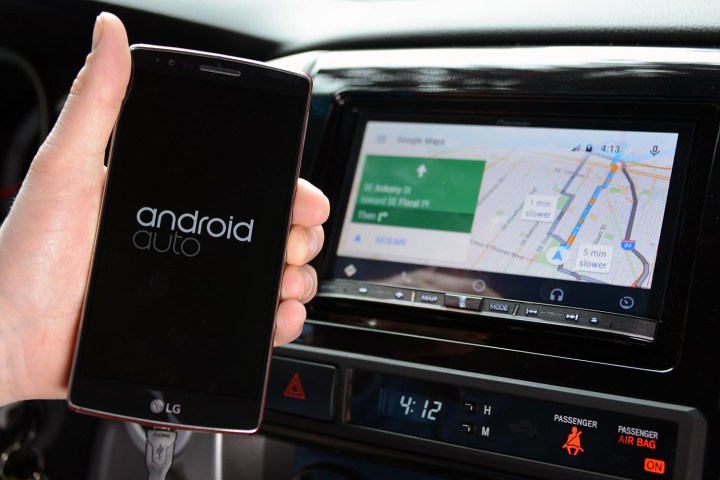
If you’re the owner of a Pixel, Pixel XL, Pixel 2, Pixel 2 XL, Nexus 5X, or Nexus 6P running Android Oreo or higher, you’ll be able to automatically load Android Auto onto your car display as soon as you climb into your Android Auto-equipped car. No longer will you need to plug in your phone — it’ll connect automatically via Wi-Fi. More devices are expected to roll out throughout the year with this same capability.
As it stands, this support only works for devices in North America, and the only head units that work are from JVC and Kenwood. Back in January, JVC unveiled two head units — the DVD-equipped KW-V940BW and disc-less KW-M845BW — under its main JVC brand, plus a trio of more expensive units under the Kenwood brand. The receivers also support AppleCarPlay, JVC’s WebLink (for apps like Waze, YouTube, and Yelp), and can interface directly with Spotify, iHeartRadio, and Pandora. They can also stream music from up to five phones.
Both JVC models have 6.8-inch resistive touchscreens, four 5o-watt outputs (or three 4-volt pre-amp outputs) and one backup camera input. The DVD-equipped KW-V940BW is priced at $700, roughly matching Alpine’s AppleCarPlay wireless receiver. Ditching the DVD player drops the price to $600 for the KW-M845BW model.
The three Kenwood models cost more, but also include more features. Each has an easier-to-use capacitive touchscreen, two camera inputs, and a proprietary dash-cam connection, among other features. The DMX905S, which features a 6.95-inch standard-definition screen, is the cheapest of the three at $805. The DDX9905 gets DVD playback and a 6.8-inch HD screen for $1,100. The top-of-the-line DNX995S adds Garmin navigation to the DDX9905’s features, and is priced at $1,500.
For many users, simply plugging in your Android phone will be a more cost-efficient option than going wireless (unless you own one of the aforementioned newly supported smartphones). For those with the money to spare, JVC’s wireless receiver could free them from the tyranny of cords and dongles — instantly making it one of the best car stereos around. Beyond that, there’s no reason to think that this technology will remain unaffordable for too long. As more companies enter the market, we’ll doubtless see prices drop as the tech becomes easier to produce.
Even with wires, Android Auto remains a great service for those cars that support it. Those driving an unsupported model aren’t left out in the cold either as some manufacturers are selling wired receivers for about $400.
These devices will allow users to make phone calls, compose text messages, find directions, and more, all without ever having to take their hands off the wheel. It’s not quite self-driving cars, but it is still a great way to use technology to make driving safer and easier for everyone.
And in case you were confused, JVC and Kenwood have been an item since 2007, when the Victor Company of Japan Kenwood agreed to put a ring on it. The two companies officially changed their name to JVCKenwood Corp. in 2011 — so much for maiden names.
Updated: Pixel and Nexus smartphones are now compatible with Android Auto wirelessly.

